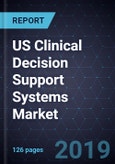A Growing Market with an Opportunity to be More than an Adjunct to the EHR
Clinical Decision Support (CDS) systems are poised to become the user interface of choice for clinical interaction with health IT, ultimately supplanting the EHR system as the primary health IT point of interface for clinicians. This is due to the fact that CDS began as a way to deliver medical content and patient information to the caregiver. Unlike EHR systems that are primarily a way for physicians to document treatment protocols, CDS applications were designed to provide support for physicians during the course of their patient interactions. As a result, CDS systems, from the start, were designed with human factors in mind: how do physicians work, how do they interact with patients, and how do they use the information to deliver that treatment? CDS systems, therefore, are much more user-friendly and, because they must interface not only with EHR systems but all manner of health IT systems, they are the logical choice to access most health IT systems. This research service explores the dynamics of CDS systems, the market for them, and the primary domains in which they are likely to prove useful.
This study focuses on the US clinical decision support system market. It covers the primary areas of CDS systems subdivided into the primary areas in which CDS systems are currently being applied: clinical knowledge and medical evidence, healthcare analytics, workflow solutions, EHRs, medical devices, data support, clinical surveillance, and CDS platforms. These areas are combined for market growth predictions into evidence, CDS analytics, workflow, and point of care solutions. Each is projected to grow through the analysis horizon, with especially robust growth in the point of care area.
Overall, the US CDS market is forecast to grow at a CAGR of 9.3% and revenues will top $6.47 billion in the US by 2024. Yet this projection could be conservative when rapid evolutions in medical technology and healthcare regulation are taken into account. In particular, changes in HHS regulations involving interoperability are likely to drive the demand for CDS capabilities, as the regulatory regime becomes much more complex. Additionally, as the Internet of Things (IoT) enables a vast new pool of medical telemetry, CDS will be the key to integrating those new data sources into the clinical workflow.
This research services will be insightful for those looking to understand this rapidly evolving market and the key participants that are driving it.








